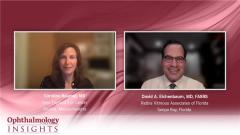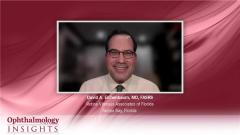
Take-Home Points for the Treatment of AMD and DME
David A. Eichenbaum, MD, FASRS and Caroline Baumal, MD provide take-home messages to providers treating AMD and DME.
Episodes in this series

David A. Eichenbaum, MD, FASRS: Let’s bring it back to the real world to close our conversation. Caroline, it’s been a real pleasure. It’s a fantastic opportunity to talk to you. I could talk to you all evening. We don’t have all evening, so let’s generate some take-home points for doctors who are looking at patients with wet AMD [age-related macular degeneration] and diabetic macular edema in the real world. What would a take-home point be for you about recommending a specific agent for common retinal disease?
Caroline Baumal, MD: My take-home point is that when considering an agent to use, efficacy, durability, and safety are the 3 key drivers that we use in retina. We have this exciting new agent, faricimab, that’s met the standard on efficacy and safety and has this potential for increased durability to benefit our patients.
David A. Eichenbaum, MD, FASRS: Thank you, Caroline. That was eloquently stated. My take-home point is to talk to your patients. Educate your patients on their disease. If you talk to your patients and spend some time with your patients, you’ll get the buy-in, you’ll get the improved adherence. The biggest gap we have on a day-to-day basis is the absence of time to educate our patients and to build that rapport, especially our patients with diabetes who have more problems with follow-up. If we talk to our patients about their disease, show them pictures and make a shared decision based their preferences in combination with our scientific knowledge, we can do our very best for them.
Thank you, Caroline, for joining me for this wonderful conversation. I’m David Eichenbaum, and I appreciate you watching this Ophthalmology Times® Insights. We hope you found this presentation to be rich and informative.
Transcript edited for clarity
Newsletter
Don’t miss out—get Ophthalmology Times updates on the latest clinical advancements and expert interviews, straight to your inbox.
















































